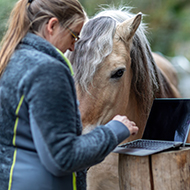The new vaccine could limit the spread of the disease.
A new vaccine against Lyme disease has been given the go-ahead to be used on mice in the United States of America.
Following successful field trials, the United States Department of Agriculture (USDA) has given a conditional licence for healthcare company US Biologic to distribute the vaccine.
It will be used in residential settings and in areas such as parks and golf courses. The company has said it will work closely with federal and state health agencies as well as partners such as the Global Lyme Alliance and the Lyme Disease Association.
The vaccine, which can be spray-coated onto food pellets, allows mice to develop antibodies to Borrelia burgdorferi, the bacterium which is responsible for Lyme disease.
White-footed mice are the principal carries of the bacteria in the USA. Ticks which have fed on animals carrying the bacteria can then spread it to other species, including humans, dogs and horses.
By reducing the number of mice carrying the bacteria, it is hoped the vaccine will help reduce the spread of the disease, protecting people and their pets.
The disease is the most common vector-borne disease in the USA, where it was first identified in 1975 in three towns in Connecticut, including Lyme and Old Lyme. The disease itself is likely to be much older.
In the UK, the bacteria is mainly carried by small rodents such as mice and voles. It is the most common vector-borne human infection in England and Wales.
Dr Scott Williams, chief scientist and department head at the Connecticut Agricultural Experiment Station, said: “Lyme disease and other tick-borne diseases present a tremendous public healthcare challenge. We need to continue to support efforts to innovate and provide these types of new tools.”



 With Strangles Awareness Week just around the corner (5-11 May), vets are being encouraged to share a survey about the disease with their horse-owning clients.
With Strangles Awareness Week just around the corner (5-11 May), vets are being encouraged to share a survey about the disease with their horse-owning clients.